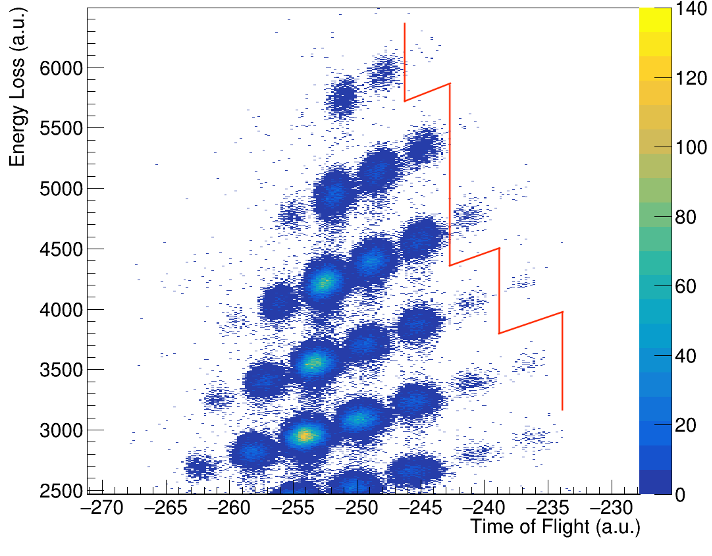The Facility for Rare Isotope Beams (FRIB) officially began operations and started its user program in May. A ribbon-cutting ceremony was held May 2, 2022 to officially mark the “start of FRIB’s scientific mission” with U. S. Secretary of Energy Jennifer Granholm and the president of Michigan State University Samuel Stanley in attendance. The first FRIB experiment, E21062, ran from May 10-18, 2022 and studied the decays of rare isotopes produced following the fragmentation of a high-intensity (1 kW) 48Ca primary beam. The exotic nuclei produced in these reactions were delivered to the center of the FRIB Decay Station Initiator (FDSi), which is a detector system designed to provide discovery potential for the decay of isotopes reaching towards the limit of stability at the neutron dripline. The FDSi detector system for the first FRIB measurement included charged particle, gamma-ray, and neutron detection systems.
The first FRIB experiment was led by spokesperson Heather Crawford (LBNL) and co-spokespersons Mitch Allmond (ORNL), Ben Crider (Mississippi State University), Robert Grzywacz (University of Tennessee Knoxville) and Vandana Tripathi (Florida State University). The team included over 50 participants from ten universities and national laboratories. While the initial beam intensity for this measurement was just 10% of that planned for the ultimate experiment, the preliminary results nonetheless show a number of isotopes with newly measured half-lives. See Figure 1. The red line in the figure separates nuclei with known half-lives – to the left – from those with no literature value – on the right.
Analysis of the data is now underway, with involvement from across the collaboration. Stay tuned for the first set of publications!
